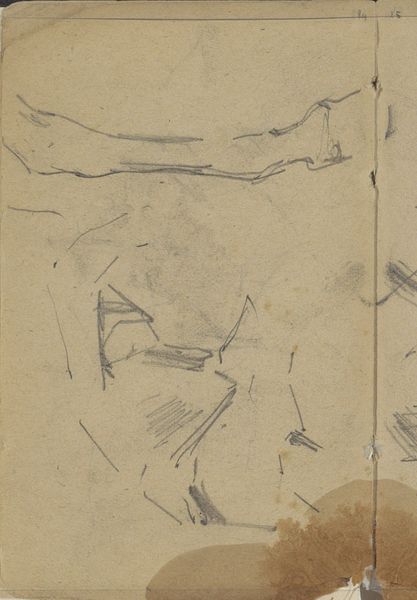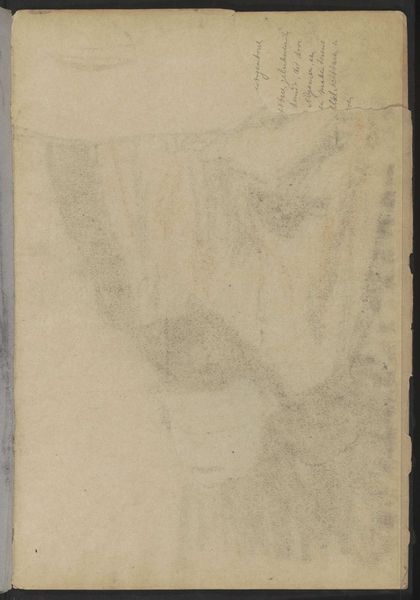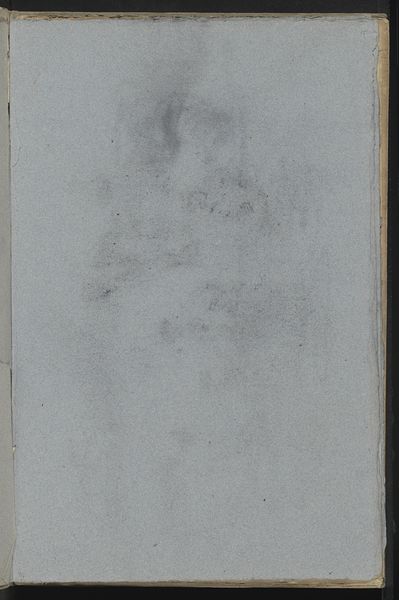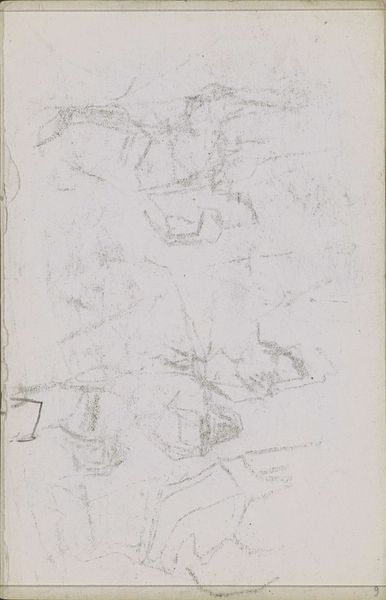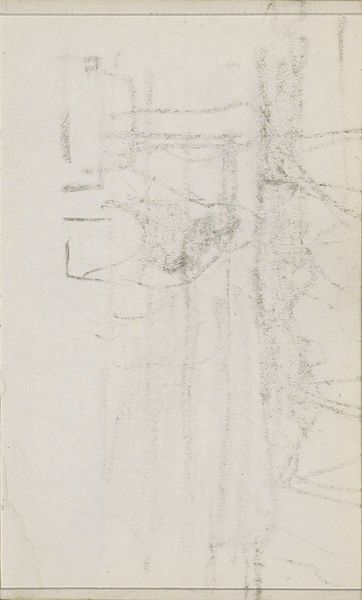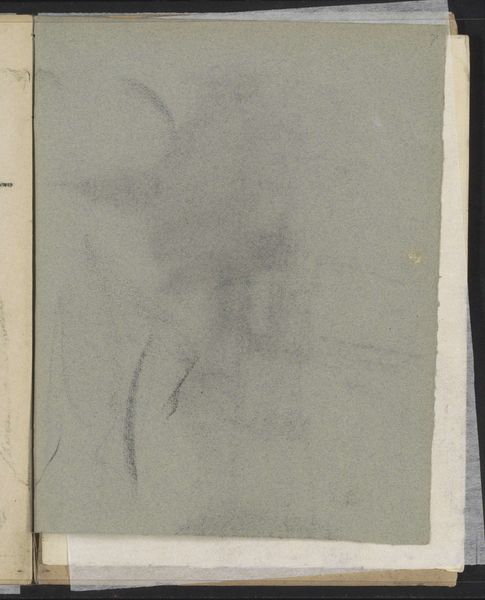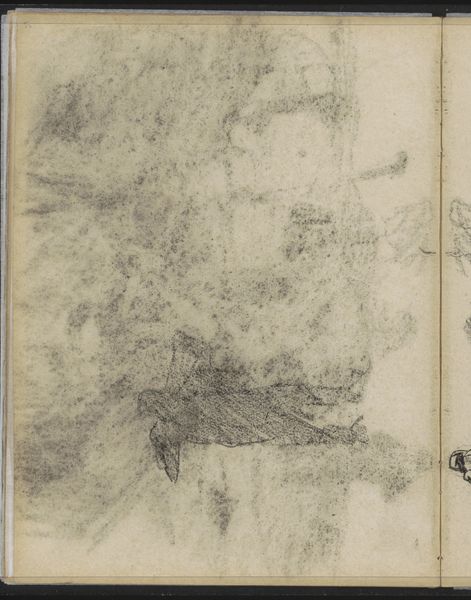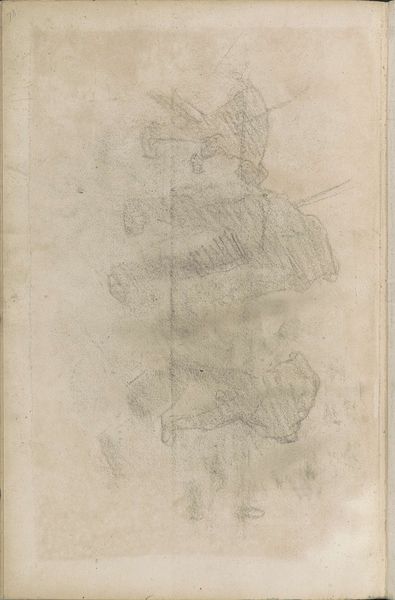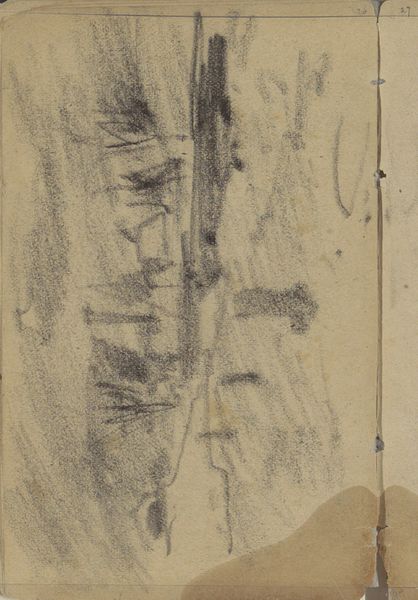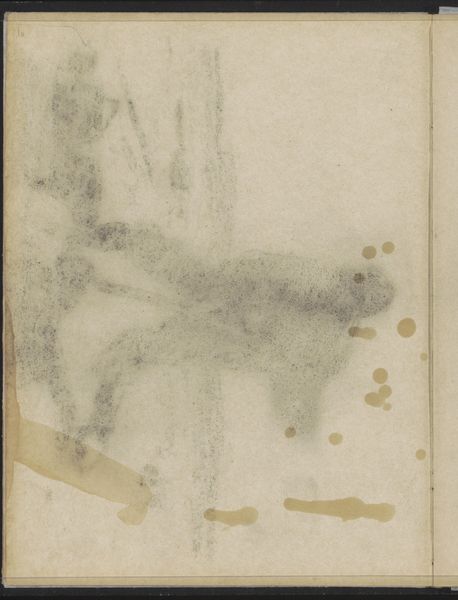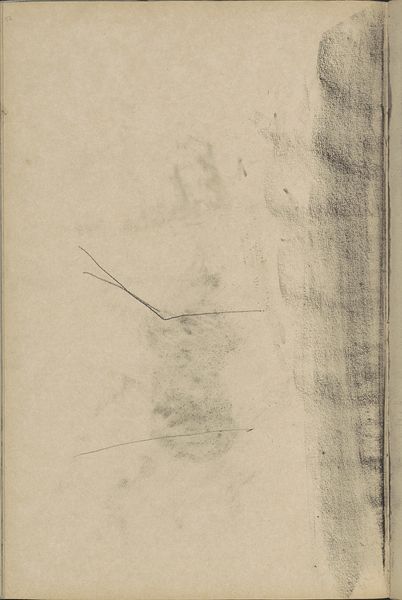
drawing, paper, pencil, graphite
#
drawing
#
impressionism
#
pencil sketch
#
figuration
#
paper
#
pencil
#
graphite
Copyright: Rijks Museum: Open Domain
Curator: Welcome. We are standing before “Abklatsch van de krijttekening op pagina 35,” a graphite drawing by Willem Witsen, dating from around 1884 to 1887. Editor: It strikes me as quite ethereal, almost a ghost on the page. There's something vulnerable and fragile about its fleeting presence, with the pale greys. I'm interested in that ambiguity—what’s present and what’s absent, here? Curator: The 'abklatsch' technique gives it that distinct faded appearance. This involved transferring an image from one surface to another, almost like a printmaking process, resulting in this ghostly copy. Witsen likely aimed to capture a specific image or effect by pressing a chalk drawing onto this paper. It certainly adds another layer to its impressionistic aesthetic, doesn't it? Editor: Definitely. And the use of such rudimentary materials – pencil and paper – contributes to that impression of raw immediacy, inviting questions of authorship. The ephemeral qualities hint at social structures being dismantled and a period in history fading. Did Witsen’s world look like that? Curator: Well, consider that Witsen was part of the Dutch Impressionist movement. During the 1880s in the Netherlands, artists turned towards capturing daily life and fleeting moments, a stark move against historical paintings in their public art spaces. This artistic direction was intertwined with political developments such as democratization, challenging norms around what deserved artistic attention. Editor: So in its understated way, even this modest drawing quietly questioned who and what mattered, during shifts in Dutch society. This small rendering connects to how everyday experiences get legitimized and elevated into what gets hung on museum walls. What did it mean for the impressionists to sketch their time? What got left out of the conversation? Curator: Those are vital questions. Ultimately, the art world—and its museums—became important cultural arenas where identities and politics were showcased to the broader world. Editor: I appreciate how this seemingly simple piece embodies profound historical complexities, shifting political landscapes and ongoing struggles around identity, place and belonging. Curator: Indeed. It encourages us to rethink artistic creation as more than just individual genius and consider collective efforts and evolving societies.
Comments
No comments
Be the first to comment and join the conversation on the ultimate creative platform.

